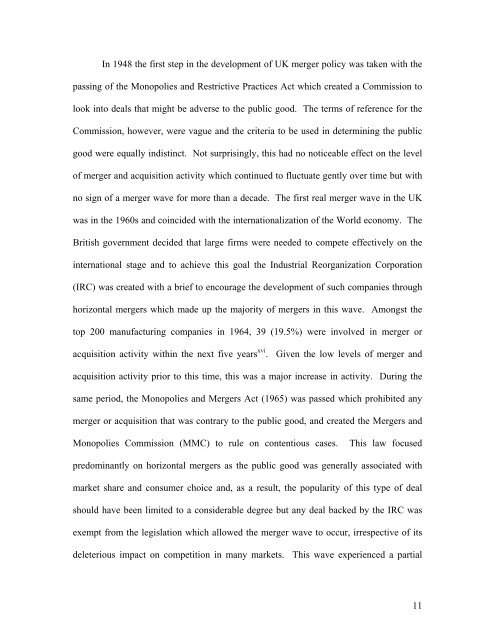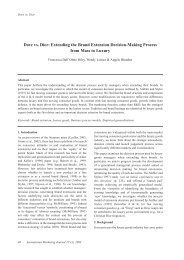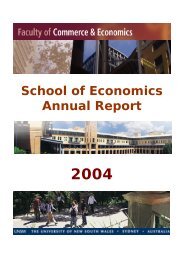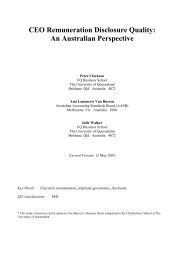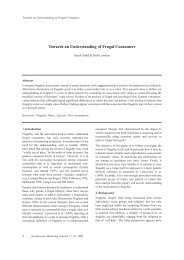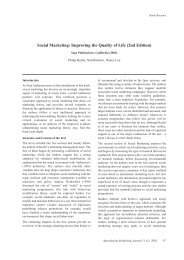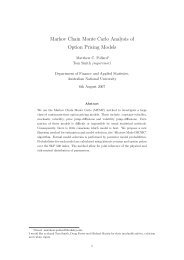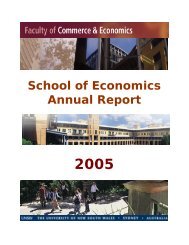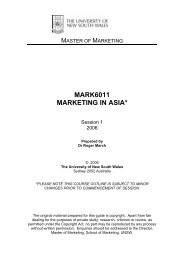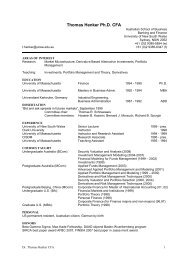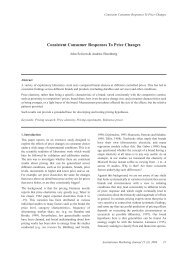The history and mystery of merger waves - University of New South ...
The history and mystery of merger waves - University of New South ...
The history and mystery of merger waves - University of New South ...
You also want an ePaper? Increase the reach of your titles
YUMPU automatically turns print PDFs into web optimized ePapers that Google loves.
In 1948 the first step in the development <strong>of</strong> UK <strong>merger</strong> policy was taken with thepassing <strong>of</strong> the Monopolies <strong>and</strong> Restrictive Practices Act which created a Commission tolook into deals that might be adverse to the public good. <strong>The</strong> terms <strong>of</strong> reference for theCommission, however, were vague <strong>and</strong> the criteria to be used in determining the publicgood were equally indistinct. Not surprisingly, this had no noticeable effect on the level<strong>of</strong> <strong>merger</strong> <strong>and</strong> acquisition activity which continued to fluctuate gently over time but withno sign <strong>of</strong> a <strong>merger</strong> wave for more than a decade. <strong>The</strong> first real <strong>merger</strong> wave in the UKwas in the 1960s <strong>and</strong> coincided with the internationalization <strong>of</strong> the World economy. <strong>The</strong>British government decided that large firms were needed to compete effectively on theinternational stage <strong>and</strong> to achieve this goal the Industrial Reorganization Corporation(IRC) was created with a brief to encourage the development <strong>of</strong> such companies throughhorizontal <strong>merger</strong>s which made up the majority <strong>of</strong> <strong>merger</strong>s in this wave. Amongst thetop 200 manufacturing companies in 1964, 39 (19.5%) were involved in <strong>merger</strong> oracquisition activity within the next five years xvi . Given the low levels <strong>of</strong> <strong>merger</strong> <strong>and</strong>acquisition activity prior to this time, this was a major increase in activity. During thesame period, the Monopolies <strong>and</strong> Mergers Act (1965) was passed which prohibited any<strong>merger</strong> or acquisition that was contrary to the public good, <strong>and</strong> created the Mergers <strong>and</strong>Monopolies Commission (MMC) to rule on contentious cases. This law focusedpredominantly on horizontal <strong>merger</strong>s as the public good was generally associated withmarket share <strong>and</strong> consumer choice <strong>and</strong>, as a result, the popularity <strong>of</strong> this type <strong>of</strong> dealshould have been limited to a considerable degree but any deal backed by the IRC wasexempt from the legislation which allowed the <strong>merger</strong> wave to occur, irrespective <strong>of</strong> itsdeleterious impact on competition in many markets. This wave experienced a partial11


